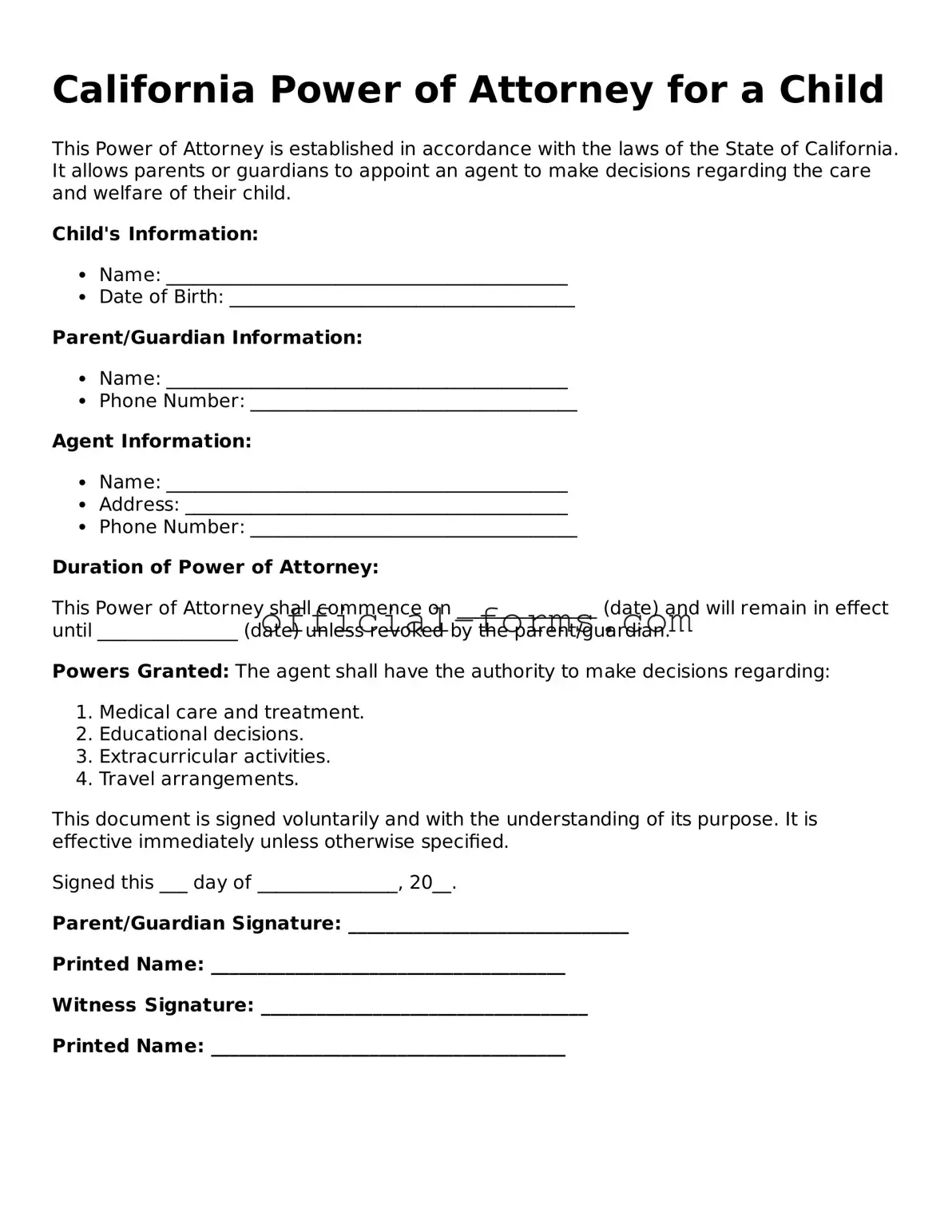Official California Power of Attorney for a Child Document
The California Power of Attorney for a Child form is a legal document that allows a parent or guardian to designate another adult to make decisions on behalf of their child. This form can be crucial in situations where the parent is unable to care for the child temporarily, ensuring that the child's needs are met without interruption. Understanding how to properly utilize this form can provide peace of mind and security for both parents and children alike.
Open My Power of Attorney for a Child Now
